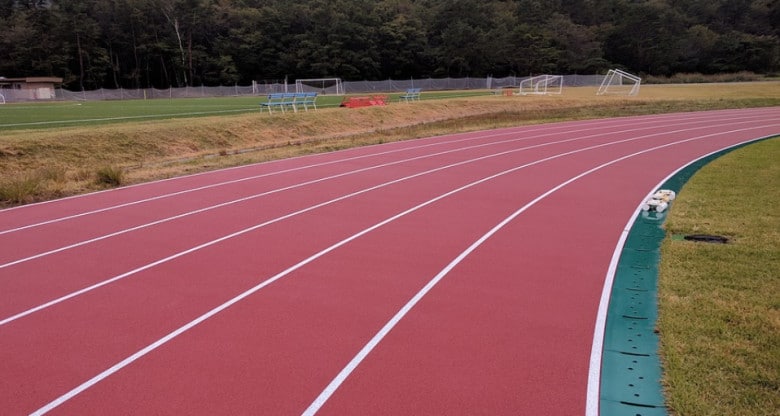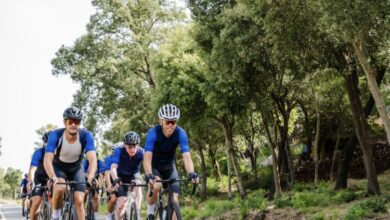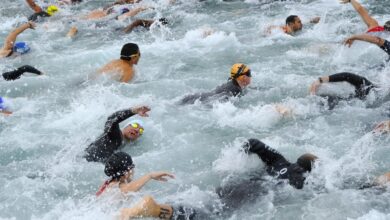Cooper test, what does it consist of

It is very likely that you have heard of the famous Cooper test on numerous occasions, or even that you still remember him from Physical Education classes when it was time to assess physical condition.
Today we will tell you a little more about this test so that you can apply it to the evaluation of your performance.
Where he was born and what does it consist of
The Cooper Test has a military origin, Well, it was Colonel Kenneth H. Cooper who devised it as a way to evaluate the aerobic performance of his soldiers in 1968.
This test is especially useful for measuring aerobic capacity and has become popular not only in the military but also in sports. But what exactly is the Cooper Test?
The simplicity of its execution, the scarce material necessary for the development and the possibility of doing it in a massive way (several athletes at the same time), are the strengths that define this test.
You only need flat terrain and a stopwatch, since the Cooper Test consists of traveling the greatest distance possible on flat ground in 12 minutes
What is the Cooper test?
To understand what the Cooper test consists of, it is essential to know that it is a 12-minute race where the objective is to cover the greatest distance possible.
This test not only serves to evaluate your cardiovascular endurance, but is also an excellent tool for planning future training.
What is?
If you're wondering what the Cooper Test is for, the answer is simple: to measure your aerobic endurance and help you improve in your future training sessions or sporting events.
Cooper Test Table
Kenneth H. Cooper devised a series of score scales or tables that indicate the individual's fitness level.
These tables were adapted according to age and sex, which led to a rapid extension in the use of the test in different areas (education, training, military, competitive examinations, etc.). Below, we show them to you:
Men
| Age | Less than 30 years | From 30 to 39 years | From 40 to 49 years | 50 years the poor |
| Very bad | Less than 1.600 meters | Less than 1.500 meters | Less than 1.400 meters | Less than 1.300 meters |
| Small | From 1.600 to 2.199 meters | From 1.500 to 1.899 meters | From 1.400 to 1.699 meters | From 1.300 to 1.599 meters |
| Regular | From 2.200 to 2.399 meters | From 1.900 to 2.299 meters | From 1.700 to 2.099 meters | From 1.600 to 1.999 meters |
| Good | From 2.400 to 2.800 meters | From 2.300 to 2.700 meters | From 2.100 to 2.500 meters | From 2.000 to 2.400 meters |
| Very good | More than 2.800 meters | More than 2.700 meters | More than 2.500 meters | More than 2.400 meters |
Women
| Age | Less than 30 years | From 30 to 39 years | From 40 to 49 years | 50 years the poor |
| Very bad | Less than 1.500 meters | Less than 1.400 meters | Less than 1.200 meters | Less than 1.100 meters |
| Small | From 1.500 to 1.799 meters | From 1.400 to 1.699 meters | From 1.200 to 1.499 meters | From 1.100 to 1.399 meters |
| Regular | From 1.800 to 2.199 meters | From 1.700 to 1.999 meters | From 1.500 to 1.899 meters | From 1.400 to 1.699 meters |
| Good | From 2.200 to 2.700 meters | From 2.000 to 2.500 meters | From 1.900 to 2.300 meters | From 1.700 to 2.200 meters |
| Very good | More than 2.700 meters | More than 2.500 meters | More than 2.300 meters | More than .2200 meters |
The Cooper Test in children and adolescents
Carrying out this type of test in children, whose body continues to form, is not indicated to correctly apply the formula and achieve the VO2max value.
Anyway, it is a test that is used a lot in education and in physical education subjects for minors to assess the improvement and progress in student performance.
The Cooper Test formula
In addition, he devised a formula to estimate from indirectly the Maximum Oxygen Consumption (VO2max), one of the most frequently used indicators to evaluate the aerobic capacity of athletes that can only be measured directly through spirometry and stress testing.
The Cooper Test formula is based on the distance traveled in those 12 minutes, and from there various interpretations and analysis of results can be made.
The formula to estimate the VO2max used in the test would be the following:
VO2max = (22 x Km traveled) - 11
How to interpret the results of the Cooper Test?
Once you've completed the Cooper Test, you'll probably wonder what exactly the results mean. Here we give you some guidelines to interpret them:
Compare with Cooper Tables
Use the results tables that we have shown you above to evaluate your level of physical fitness. These charts will give you a general idea of where you stand compared to others of your same age and gender.
VO2max
This value, calculated from the Cooper Test formula, will give you a measure of your aerobic capacity. The higher this number, the better your ability to perform prolonged aerobic activities.
If you are interested in knowing more ways to calculate your VO2max, you can consult this article
Improves over time
If you take the Cooper Test at different times, you will be able to evaluate your progress. An increase in distance traveled or VO2max will indicate an improvement in your fitness.
To establish objectives
Use your results as a starting point to set realistic and achievable goals in your training.
Cooper test example
For example, a 28-year-old woman who covers 2.300m in the 12 minutes will have a good physical condition and her estimated VO2max in the test will be:
VO2max = (22 x 2,3) -11 = 39,6 ml / kg / min
The result will have to be multiplied by the body weight to obtain the ml (L) of oxygen that our athlete consumes per minute.
How to do the Cooper test?
Before getting down to work, we recommend that you follow these guidelines for its completion:
- Carry out a proper warm-up and adapted to the effort to be made later (Ex: joint mobility, smooth running, progressive short series without reaching the stop, etc.)
- Make sure you are in the minimum level of physical condition to do it. Since it is a maximum effort test, we must take several months of training prior to its execution.
- Do it on flat ground and stable where we can measure the distance, either on the ground (eg athletics track) or with a GPS watch.
- Avoid running on days of fatigue, load or when body conditions may influence the result (eg: allergy, menstruation, catarrhal processes, etc.).
- End with a cool down to normalize breathing and heart rate once the test is completed.
Now you know a little more about the Cooper Test and you can use it in the evaluation of your physical condition, but do not lose sight of our considerations and follow the planning of qualified trainers to improve in a healthy way.

Dra. Science of Physical Activity and Sport
There are no previous results.




























